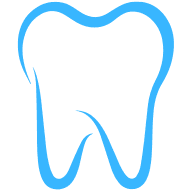The dental industry is a dynamic and ever-evolving sector. With advancements in technology and shifts in consumer behavior, the landscape of this industry is changing rapidly. This blog post aims to shed light on the current market trends in the dental industry, providing valuable insights for practitioners, investors, and stakeholders alike.
The Rise of Digital Dentistry
Digital dentistry is revolutionizing the way dental procedures are conducted. From 3D imaging to CAD/CAM systems, technology is transforming the industry. Dental professionals are now able to provide more accurate diagnoses and treatment plans, improving patient outcomes and satisfaction.
Moreover, the adoption of digital dentistry is not just limited to large practices or hospitals. Small and medium-sized practices are also embracing this trend, recognizing the benefits it brings. Digital dentistry not only enhances the quality of care but also streamlines operations, reducing costs and increasing efficiency.
However, the transition to digital dentistry is not without challenges. Dental professionals need to invest in training and equipment, which can be costly. Additionally, there are concerns about data security and privacy, especially with the use of cloud-based systems. Despite these challenges, the trend towards digital dentistry is expected to continue, driven by the demand for better and more efficient dental care.
The Growing Importance of Preventive Dentistry
Preventive dentistry is gaining prominence in the dental industry. This approach focuses on preventing dental diseases before they occur, rather than treating them after they have developed. It includes regular dental check-ups, cleanings, and patient education.
Preventive dentistry not only improves oral health but also reduces healthcare costs. By catching dental issues early, it can prevent the need for more expensive and invasive treatments later on. Furthermore, preventive dentistry can also contribute to overall health, as poor oral health has been linked to various systemic diseases, including heart disease and diabetes.
The rise of preventive dentistry is being fueled by increasing awareness about oral health and the benefits of preventive care. More and more patients are recognizing the importance of regular dental visits and good oral hygiene. As a result, dental practices that offer preventive services are likely to see increased demand.
The Impact of Tele-dentistry
Tele-dentistry is another trend that is shaping the dental industry. This involves the use of information technology and telecommunications for dental care, consultation, education, and public awareness. Tele-dentistry can be particularly useful in rural or underserved areas, where access to dental care can be limited.
Through tele-dentistry, patients can consult with dental professionals remotely, saving time and travel costs. It can also facilitate the sharing of patient records and images, enabling better collaboration among dental professionals. Furthermore, tele-dentistry can be used for patient education, promoting oral health and disease prevention.
While tele-dentistry offers many benefits, it also poses some challenges. These include technical issues, regulatory hurdles, and concerns about the quality of care. Nevertheless, with the ongoing digital transformation in healthcare, tele-dentistry is likely to become more prevalent in the future.
The Role of Dental Tourism
Dental tourism is a growing trend in the dental industry. This involves individuals traveling to other countries for dental care, often to take advantage of lower costs or shorter waiting times. Popular destinations for dental tourism include Mexico, Thailand, and Hungary.
Dental tourism can provide significant savings for patients, especially for expensive procedures like dental implants or cosmetic dentistry. However, it also carries risks, such as the potential for substandard care or complications. Therefore, patients considering dental tourism should do thorough research and choose reputable providers.
For dental practices, dental tourism can be a double-edged sword. On one hand, it can bring in new patients and revenue. On the other hand, it can also increase competition, as patients have more options to choose from. To succeed in this environment, dental practices need to offer high-quality care and differentiate themselves from competitors.
The Emergence of Green Dentistry
Green dentistry, also known as eco-friendly dentistry, is a trend that is gaining traction in the dental industry. This involves the use of environmentally friendly practices and materials, with the aim of reducing the environmental impact of dental services.
Green dentistry can include various practices, such as using biodegradable products, reducing water and energy usage, and implementing waste management strategies. It can also involve the use of non-toxic materials, to minimize exposure to harmful substances.
While green dentistry can require initial investment, it can also lead to cost savings in the long run. Moreover, it can enhance the reputation of dental practices, as more and more patients are seeking out environmentally responsible providers. As such, green dentistry represents not only an ethical choice but also a strategic one for dental practices.
The Influence of Dental Insurance
Dental insurance plays a significant role in the dental industry. It affects not only the affordability of dental care but also the demand for dental services. With dental insurance, patients are more likely to seek regular dental care and opt for recommended treatments.
However, dental insurance can also pose challenges for dental practices. These include dealing with insurance claims and reimbursements, which can be time-consuming and complex. Furthermore, insurance companies often dictate the fees for dental services, which can limit the revenue of dental practices.
Despite these challenges, dental insurance remains a key factor in the dental industry. It is therefore important for dental practices to understand the insurance landscape and develop strategies to navigate it effectively.
Deciphering the Future of the Dental Industry
The dental industry is undergoing significant changes, driven by technological advancements, changing consumer behaviors, and evolving market dynamics. By understanding these trends, dental professionals can better position themselves for success in this dynamic industry. While challenges exist, so do opportunities for those who are willing to adapt and innovate. The future of the dental industry promises to be exciting and full of potential.

